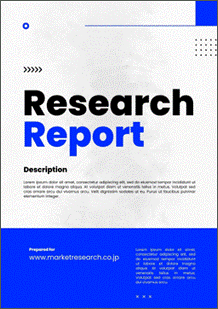 | • レポートコード:MRC2108A500 • 出版社/出版日:Mordor Intelligence / 2021年7月 • レポート形態:英文、PDF、150ページ • 納品方法:Eメール(受注後2-3営業日) • 産業分類:建設 |
| Single User | ¥481,000 (USD3,250) | ▷ お問い合わせ |
| Team User | ¥555,000 (USD3,750) | ▷ お問い合わせ |
| Corporate License | ¥962,000 (USD6,500) | ▷ お問い合わせ |
• お支払方法:銀行振込(納品後、ご請求書送付)
レポート概要
| Mordor Intelligence社は、プレハブ建築物のポーランド市場規模が2021年から2026年の間に4%成長すると予測しています。本調査資料では、ポーランドのプレハブ建築物市場について調査し、イントロダクション、調査手法、エグゼクティブサマリー、市場インサイト、市場動向、用途別分析、競争状況、市場機会/将来の見通しなどを掲載しています。 |
Poland’s prefabricated buildings industry is expected to grow at a CAGR of over 4% during the forecasted period. Due to the industrialization, urbanization, and rapid population growth of the developing economy, the prefabricated building market is expected to witness growth during the forecast period. The prefabrication process of building has completely changed the entire construction industry. They are more efficient and can be completed 30-50% faster than traditional construction methods. Additionally, prefabricated construction will have ample opportunities to grow due to rising consumer preferences for green buildings and sustainable construction processes.
The outbreak of the COVID-19 pandemic has led to severe uncertainty for vendors and contractors in the construction industry across Poland. Several construction companies shut down their projects due to lockdown and restrictions. However, due to immediate requirements for hospitals and quarantine sectors, the demand for prefabricated materials witnessed an increase. Since a high workforce is required for traditional construction, opting for prefabricated buildings came out as an optimum solution during the pandemic. With the increasing shift toward turnkey housing solutions, the prefabricated housing market expects to pick across Poland. Moreover, the ease of preparation and consent procedures are likely to boost the demand for prefabricated houses.
Key Market Trends
Demand for Prefabricated Houses is Increasing in Poland
In Poland, prefabricated housing is currently assumed to be less popular than in other European regions, with some catch-up effect anticipated going forward, underpinned by strong growth until 2026. Demand for prefabricated houses is expected to be driven by a growing demand for convenience and security (provision of guarantee) across all European regions. The market value of prefabricated family housing is expected to grow faster than volume growth due to – shift towards turnkey solutions with 20-30% higher average prices (greater value-added) and floor-covering – favorable pricing trends due to growing wage levels across all European regions. Prefabricated housing growth in Poland is expected to outpace the traditional family housing market.
Labour Cost is Rising in Poland
The Polish government significantly increased the national minimum wage by 15% and increased employer social insurance contributions by 10%. These measures have placed a greater burden on smaller construction companies and self-employed individuals. Large construction companies now need to implement employee capital plans (PPK) or employee pension plans (PPE). The wage increase has the biggest impact on small and medium-sized construction companies because they often pay workers the minimum wage. Larger companies with 250 or more employees usually pay higher than the legal minimum wage. Despite this, large companies still have an indirect impact, because these companies usually hire subcontractors to increase prices. The construction sector is concerned that the Ukrainian workers will find more lucrative work in other countries, specifically Germany, or even back in the Ukraine which has recently witnessed an economic upturn and rapid growth in wages.
Competitive Landscape
The market is relatively fragmented. There are several international as well as domestic companies present in Poland’s prefabricated buildings market. Companies are focusing on technological innovation. Some suppliers are providing fully customized wooden prefabricated structures. High capital requirements and rapid technological advancement are important barriers to entry for new participants. Intensified competition has led to the emergence of many innovative and advanced solutions on the market, such as turnkey solutions and lightweight ceramic houses.
Therefore, achieving sustainability, expanding to other regions, and restoring domestic demand are important factors for companies. Companies can implement effective production technologies to minimize product costs and reduce related risks, thereby increasing profitability. Major players are Containex, Unihouse, Thomas Beton, Styrobud, and Pepebe.
Reasons to Purchase this report:
- The market estimate (ME) sheet in Excel format
- 3 months of analyst support
1 INTRODUCTION
1.1 Study Assumptions
1.2 Scope of the Study
2 RESEARCH METHODOLOGY
2.1 Analysis Methodology
2.2 Research Phases
3 EXECUTIVE SUMMARY
4 MARKET INSIGHTS
4.1 Current Market Scenario
4.2 Technological Trends
4.3 Insights on Supply Chain/Value Chain Analysis of the Prefabricated Buildings Industry
4.4 Brief on Different Structures Used in the Prefabricated Buildings Industry
4.5 Cost Structure Analysis of the Prefabricated Buildings Industry
4.6 Impact of COVID-19 on the Market
4.7 Insights on Different Types of Materials used in Prefabricated Buildings Construction
5 MARKET DYNAMICS
5.1 Drivers
5.2 Restraints
5.3 Opportunities
5.4 Porter’s Five Forces Analysis
5.4.1 Bargaining Power of Suppliers
5.4.2 Bargaining Power of Consumers / Buyers
5.4.3 Threat of New Entrants
5.4.4 Threat of Substitute Products
5.4.5 Intensity of Competitive Rivalry
6 MARKET SEGMENTATION
6.1 By Application
6.1.1 Residential
6.1.2 Commercial
6.1.3 Industrial
7 COMPETITIVE LANDSCAPE
7.1 Overview
7.2 Company Profiles
7.2.1 Containex
7.2.2 Unihouse
7.2.3 Thomas Beton
7.2.4 Styrobud
7.2.5 Pepebe
7.2.6 MCM Project
7.2.7 Budizol
7.2.8 Prologis
7.2.9 Unimex
7.2.10 Mabudo*
8 MARKET OPPORTUNITIES AND FUTURE TRENDS
9 APPENDIX
9.1 Marcroeconomic Indicators (GDP breakdown by sector, Contribution of construction to economy, etc.)
9.2 Key Production, Consumption,Exports & import statistics of construction Materials